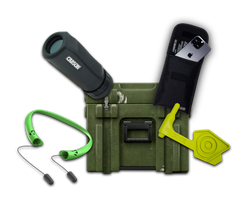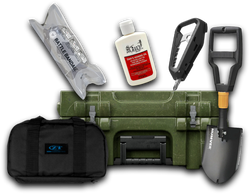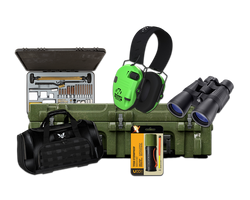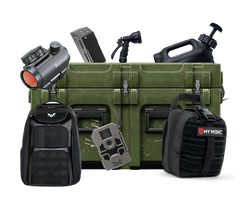Understanding What Does Field of View Mean on Binoculars
Table of Contents
- Introduction
- What Is Field of View?
- Why Does Field of View Matter?
- Factors Affecting Field of View
- Comparing Field of View in Different Binoculars
- Practical Tips for Choosing Binoculars Based on Field of View
- Conclusion
- FAQ
Introduction
Imagine standing at the edge of a vast wilderness, the crisp air filled with the sounds of nature. You lift your binoculars to your eyes, scanning the landscape for wildlife, eager to spot that elusive deer or rare bird. But how much of that stunning scenery can you actually see through your binoculars? This crucial element of your optical tool is known as the field of view (FOV), a term that can significantly impact your outdoor experience.
The field of view of binoculars refers to the width of the observable area seen through the lenses, typically measured in feet at a distance of 1,000 yards or in degrees. It's a concept that plays a pivotal role in various activities, from birdwatching and hunting to stargazing and sports events. As you navigate the world of optics, understanding FOV is essential for selecting the right binoculars for your needs.
In this blog post, we will delve into the intricacies of binocular field of view, addressing its significance, how it’s measured, and the various factors that influence it. Additionally, we will highlight how Crate Club's curated selection of tactical gear, including high-quality binoculars, can enhance your outdoor adventures. By the end of this article, you will have a comprehensive understanding of what field of view means on binoculars and why it matters for your specific applications.
What Is Field of View?
The field of view is essentially the observable area that you can see through your binocular lenses. It’s a critical specification that defines how much of your surroundings you can capture in a single glance. This measurement can be expressed in two main ways:
-
Linear Field of View (FOV): This is usually expressed in feet at a distance of 1,000 yards. For example, if a pair of binoculars has a field of view of 300 feet at 1,000 yards, it means that at that distance, you can see an area 300 feet wide.
-
Angular Field of View: This is measured in degrees and represents the angle of the view you can obtain through the binoculars. The larger the angle, the wider your field of view.
How Field of View Is Calculated
The field of view is primarily determined by the binocular's magnification and the size of its objective lens. Generally, the formula for calculating the linear field of view is:
[ \text{Linear FOV} = \text{Angular FOV} \times 52.5 ]
For example, if you have an angular field of view of 6 degrees, the linear field of view at 1,000 yards would be:
[ 6 \times 52.5 = 315 \text{ feet} ]
Thus, when assessing binoculars, it’s essential to check both the linear and angular measurements to get a complete picture of what you can expect in terms of visibility.
Why Does Field of View Matter?
Understanding field of view is not just a matter of technical specifications; it has real-world implications for various activities. Here’s why FOV matters:
1. Wildlife Observation
For birdwatchers and wildlife enthusiasts, a wider field of view is advantageous. It allows for easier spotting and tracking of moving animals. When observing birds, for instance, having a broad field of view means you can quickly locate them among branches or foliage. The ability to see a larger area can help you anticipate their movements, making your experience more enjoyable and successful.
2. Sports and Events
At sporting events, spectators often use binoculars to get a closer view of the action. A wider FOV ensures that you can follow the game without constantly adjusting your binoculars. Whether you’re tracking a fast-moving soccer ball or a runner crossing the finish line, having a larger field of view enhances your overall experience.
3. Hunting
In hunting scenarios, the field of view plays a critical role in spotting and tracking game. A wider FOV allows hunters to scan the terrain more efficiently, increasing the chances of spotting wildlife. As the saying goes, "the greater the field of view, the easier it is to spot targets." This is particularly important when hunting in dense forests or during twilight hours when visibility is reduced.
4. Astronomy
When observing celestial bodies, a wide field of view is beneficial for locating and tracking objects in the night sky. Whether you’re a seasoned astronomer or a casual stargazer, understanding the FOV of your binoculars can enhance your ability to explore the cosmos.
Factors Affecting Field of View
Several factors impact the field of view in binoculars, including:
1. Magnification
The relationship between magnification and field of view is inversely proportional. Generally, the higher the magnification, the narrower the field of view. For example, an 8x42 binocular will typically have a wider field of view than a 10x42 model. This is because the increased magnification zooms in on a smaller area, which is beneficial for detail but makes it harder to track movement.
2. Objective Lens Diameter
The diameter of the objective lens (the front lens) also influences the FOV. A larger objective lens can gather more light, which enhances image brightness and clarity. However, it's important to note that a larger objective lens may not always correlate with a wider field of view.
3. Optical Design
The design of the binoculars, including the configuration of the eyepiece and the quality of the optics, significantly affects the field of view. Advanced optical designs can provide wider fields of view without sacrificing image quality. It’s essential to consider the build quality and brand reputation when choosing binoculars.
4. Eyepiece Design
The eyepiece design can also influence how much of the field you can effectively utilize. Some eyepieces are engineered to provide a wider apparent field of view, allowing users to experience a more immersive view.
5. Eye Relief
Eye relief refers to the distance from the eyepiece at which the image is in focus. Binoculars with long eye relief can be more comfortable to use, especially for those who wear glasses. However, if the eye relief is too short, it can limit the field of view experienced by the user.
Comparing Field of View in Different Binoculars
When comparing binoculars, it’s essential to look beyond magnification and objective lens size. Here are some examples of how field of view varies among different types of binoculars:
Example 1: Birdwatching Binoculars
Birdwatching often requires binoculars with a wider field of view to quickly locate and follow birds in flight. For instance:
- 8x32 Binoculars: Often have a field of view of around 426 feet at 1,000 yards.
- 10x32 Binoculars: Typically have a narrower field of view, around 330 feet at 1,000 yards.
Example 2: Hunting Binoculars
For hunters, the choice of binoculars might depend on whether they’re tracking game in dense forests or open fields:
- 8x42 Binoculars: Generally provide a good balance, with a field of view of approximately 400 feet at 1,000 yards.
- 10x42 Binoculars: Offer a narrower field of view, making it harder to spot moving targets.
Example 3: Astronomy Binoculars
For stargazing, a wider field of view can help locate constellations and celestial events:
- 7x50 Binoculars: May provide a field of view of around 400 feet at 1,000 yards, making them ideal for sweeping the night sky.
- 10x50 Binoculars: Although they offer more detail, they might have a narrower FOV, necessitating more frequent adjustments.
Practical Tips for Choosing Binoculars Based on Field of View
When selecting binoculars, consider these practical tips to ensure you choose the best model based on field of view:
-
Identify Your Primary Use: Consider whether you’ll be using your binoculars for birdwatching, hunting, sports events, or stargazing. Each activity has different FOV requirements.
-
Balance Magnification and FOV: If you prioritize detail, a higher magnification may be appealing. However, remember that this will generally reduce your field of view.
-
Check Specifications: Always refer to the specifications for both linear and angular field of view when comparing models. Don’t hesitate to ask sales associates for clarification.
-
Test Before You Buy: Whenever possible, test binoculars in-store to gauge their comfort and usability. Pay attention to how easy it is to locate and track objects.
-
Consider Your Environment: If you plan to use binoculars in densely wooded areas or for fast-moving subjects, opt for models with wider fields of view.
Conclusion
Understanding what field of view means on binoculars is crucial for anyone looking to enhance their outdoor experiences. This key specification influences how much of the landscape you can see and how effectively you can track wildlife, follow sports events, or explore the night sky. By grasping the relationship between magnification, objective lens size, and optical design, you can make informed choices that cater to your specific needs.
At Crate Club, we recognize the importance of having the right tactical gear for your adventures, which is why we offer a curated selection of high-quality binoculars designed to elevate your experience in the field. Whether you're a budding birdwatcher or an avid hunter, we have options that will empower your pursuits.
For those eager to dive deeper into the world of tactical gear, consider exploring our Crate Club Subscription Service for monthly curated gear or visit our Crate Club Shop for stand-alone products, including premium binoculars that can enhance your outdoor experience.
Ready to take your outdoor adventures to the next level? Understanding field of view is just the beginning. Gear up and get out there!
FAQ
What is a good field of view for birdwatching binoculars?
A good field of view for birdwatching binoculars is generally considered to be between 350 and 400 feet at 1,000 yards. This allows for easier spotting and tracking of birds in flight.
Does a higher magnification always mean a smaller field of view?
Yes, generally speaking, higher magnification results in a smaller field of view. This is because as you zoom in on a subject, you see less of the surrounding area.
How can I calculate the field of view of my binoculars?
You can calculate the linear field of view by multiplying the angular field of view (in degrees) by 52.5. For example, if the angular field of view is 6 degrees, the linear field of view at 1,000 yards would be 315 feet.
Can I use binoculars for stargazing?
Absolutely! Binoculars are great for stargazing, especially models with a wider field of view, as they allow you to locate and follow celestial objects more easily.
What should I look for in binoculars for hunting?
When choosing binoculars for hunting, look for models with a good balance of magnification and field of view. A wider FOV is beneficial for spotting and tracking game, especially in dense environments.
Share this article



